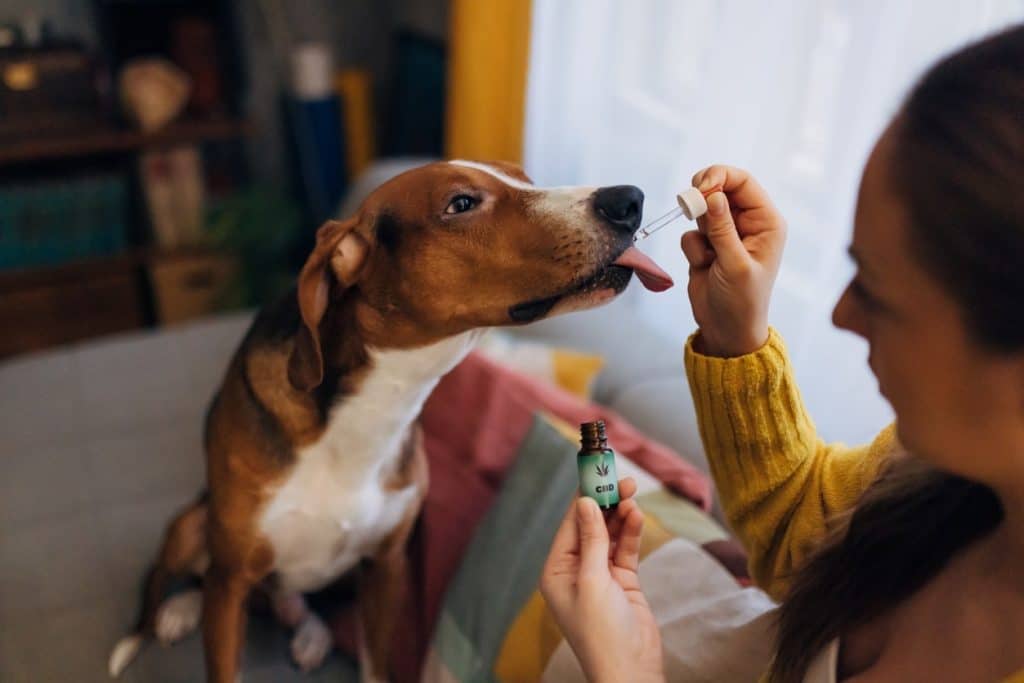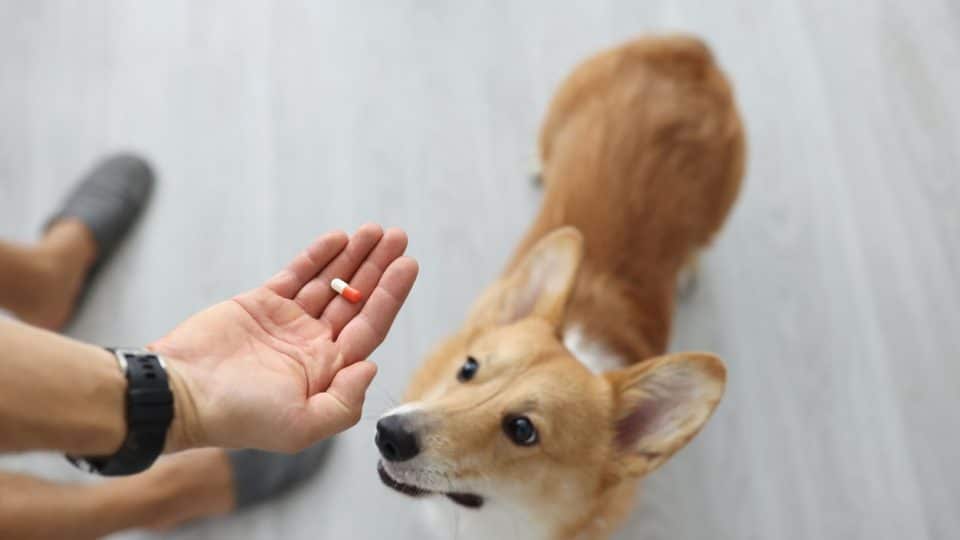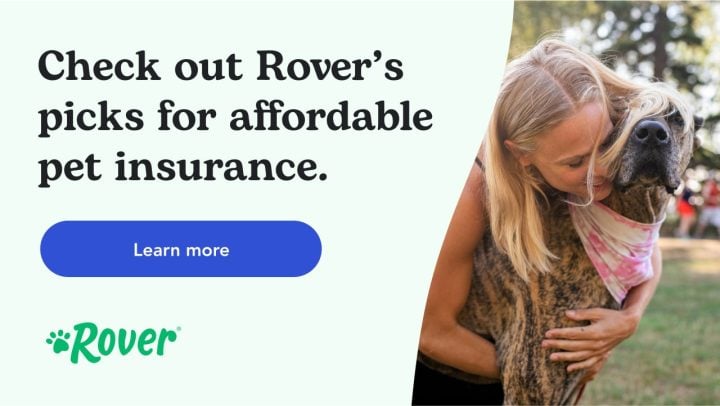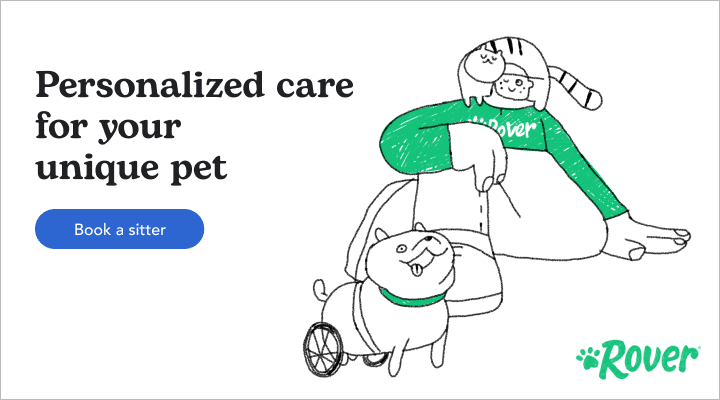- Not a substitute for professional veterinary help.
Pet parents with anxious dogs might turn to medication first to help their pup. However, while anxiety medications for dogs are effective, they work best in conjunction with behavioral and environmental modifications, says Alexis Hughes, a vet at My Family Vets.
There’s no “best” medication for treating anxiety in dogs. Various drugs are available, and vets consider numerous factors before prescribing. Never give your dog anxiety medication for humans, such as Benadryl – ingredients and dosage levels can prove toxic.
Below, we’ll dive deep into possible anxiety medications and how you can help your anxious dog with behavior and environment changes, too.
Does Your Dog Need Anxiety Meds?
Medications aren’t usually the first port of call for anxiety treatment. “Typically, behavioral modifications are recommended as first-line treatments,” shares Dr. Carly Fox, Senior Veterinarian at Schwarzman Animal Medical Center.
However, when prescribed by a vet, Dr. Fox says anxiety medications are an effective short- and long-term treatment. See a vet about anxiety medication for your dog if they display any of the following anxiety symptoms:
- Shaking or shivering
- Yawning
- Drooling or panting
- Droopy or flat ears
- Sweaty paws
- Frequent vocalizations
- Hiding and curling into a ball
- Baring their teeth
- Tucking their tail
Common Types of Dog Anxiety Medications
Numerous drugs help treat a dog’s anxiety – although they’re available by prescription only. “There are no true over-the-counter anti-anxiety medications for dogs,” Fox asserts.
Prescription medications can aid in minimizing everything from separation anxiety to travel anxiety. The amount prescribed and how often each drug should be taken varies depending on the medication and symptom severity. Speak with your vet about what’s best for your dog. Below are some common prescription drugs, along with their potential side effects.
| Drug Name | Delivery Format | Dosage | Potential Side Effects |
| Clomipramine | Tablets | 1-3mg per 1kg dog weight | Reduced appetite, dry mouth, diarrhea, vomiting |
| Fluoxetine | Tablets | 1-3mg per 1kg dog weight | Diarrhea, vomiting, reduced appetite, drowsiness, restlessness, anxiety, trembling, irritability |
| Amitriptyline | Tablets | 1-4mg per 1kg dog weight | Drowsiness, vomiting, diarrhea, constipation, unusual behaviors |
| Alprazolam | Tablets | 0.01-0.1mg per 1kg dog weight | Loss of coordination, drowsiness, sedation, insomnia, hunger, anxiety, hallucinations, muscle relaxation |
| Buspirone | Tablets | 0.5-2mg per 1kg dog weight | Drowsiness, upset stomach, restlessness, dizziness, irregular heartbeat, constricted (smaller) pupils |
| Diazepam | Tablet, suppository | 0.5-2mg per 1kg dog weight | Loss of coordination, drowsiness, weakness |
| Sertraline | Tablets or liquid | 1-3mg per 1kg dog weight | Reduced appetite, drowsiness, restlessness, vomiting, diarrhea, panting, trembling |
| Trazodone | Tablets | 3-8mg per 1kg dog weight | Lethargy, diarrhea, vomiting, loss of coordination, excessive sedation |
| Lorazepam | Tablets | 0.025-2mg per 1kg dog weight | Hunger, drowsiness, restlessness, loss of balance, confusion |
| Sileo | Oral gel | 1 drop per 1.9-5.4kg/weight | Vomiting, upset stomach, swelling around the eye socket, drowsiness/sedation, urinary incontinence, dilated pupils, loss of coordination |
| Gabapentin | Capsules or liquid | 5-30mg per 1kg weight | Poor coordination, fatigue |
| Paroxetine | Tablets | 0.5-2mg per 1kg weight | Nervousness, fatigue, appetite loss, excitation. Can be toxic in large doses |
| Acepromazine | Tablets or oral gel | 0.5-2mg per 1kg weight | Sedation, eye redness, loss of coordination, urinary incontinence |
If your dog is prescribed anxiety medication, be patient. Dr. Fox says long-term medications take 4-6 weeks to work effectively.

iStock/Capuski
What Are the Benefits & Drawbacks of Anxiety Medications?
The overall benefit of anxiety medications is simple: They can significantly ease your dog’s anxiety and related symptoms. They may also lead to positive effects more quickly than through behavior training alone. So, what about side effects? While side effects like GI issues happen, Hughes says these resolve quickly, and the medications are safe overall.
Meanwhile, some medications can have the opposite effect on anxiety. “Unfortunately, some medication can cause ‘disinhibition,’ which can lead to worsening behaviors,” Hughes explains. In these cases, she recommends “test doses” before fully using the medication.
Additionally, some scenarios and timings might reduce medication effectiveness. For instance, medications are often best administered before a dog has anxiety.
Finally, don’t assume medication is a long-term solution. In fact, Hughes explains that some medications are only safe to use long-term when paired with behavioral modifications. She notes that weaning a dog off a medication must be done slowly and under professional guidance. This helps avoid withdrawal symptoms and reduces the likelihood of anxiety symptoms recurring.
How to Administer Dog Anxiety Medications at Home
When giving your dog anxiety medications, following professional guidance is essential. “Prescription anxiety medications should be administered as written by your primary care veterinarian,” Dr. Fox says. For instance, giving your dog too much of a drug may lead to significant health concerns, such as toxicity. Dr. Fox says to contact your vet or the ASPCA Poison Control Center if you incorrectly administer the medication or if your pet ingests human anxiety medications.
Generally, dogs can take anxiety medication with food, so consider sneaking tablets into your canine’s bowl. However, “dogs are smart and may refuse their pills if they are hidden in food,” says Dr. Jaclyn Coble, veterinarian and CEO and founder of Sea Legs Integrative Veterinary Health.
If your dog is reluctant to take a pill, Dr. Coble says a pill administrator or pill gun can help. Additionally, your vet might recommend other formulations, like chewables or liquid medicine.
9 Alternative Calming Methods for Dogs
Besides medication and behavior training, here are alternative approaches that can help ease anxiety symptoms in dogs.
- Aromatherapy. This is the best way to use essential oils for your dog’s anxiety with devices such as diffusers. While some oils can safely be applied to the skin or fur, others can be dangerous or toxic to dogs—make sure you’re prepared before starting. Effective scents include lavender, tangerine, and frankincense.
- Pheromone sprays. Dogs release natural chemicals called pheromones, some of which encourage a calming effect. Specially designed sprays help replicate this soothing response, and research shows they’re especially helpful for separation anxiety.
- De-stressing toys. From heartbeat toys to complicated puzzles, toys can help reduce anxiety by providing comfort and distraction.
- Dietary supplements. Various supplements – such as l-tryptophan and melatonin – are associated with a soothing effect in dogs. For example, l-tryptophan increases serotonin (the “happy” chemical), while melatonin is calming.
- Acupuncture. This practice involves gently inserting needles into various body areas to regulate the nervous system and instill calm.
- Calming treats. While regular treats are for rewards, calming treats are help soothe anxiety and contain calming ingredients such as chamomile, l-tryptophan, l-theanine, and lavender.
- Thundershirts. Similar to an outdoor jacket, Thundershirts provide gentle pressure to the wearer – a bit like swaddling a baby. In turn, this promotes a sense of relaxation and calm.
- CBD. While CBD remains illegal in many states, research is ongoing on the safety and efficacy of using CBD products in dogs. However, one study saw CBD significantly reduced dogs’ heart rate, the stress chemical cortisol, and anxious behaviors. Speak to your vet before giving CBD products to your dog.
- Massage. A gentle massage can go a long way in easing anxiety. The good news? Giving your dog a massage is simpler than you think.

iStock/Kosamtu
When To See a Vet For Your Dog’s Anxiety
See a vet right away if your dog’s anxiety is affecting them emotionally, says Rachel Bean, a qualified veterinary nurse, leading canine first aider, and author of the iPET Network’s Ofqual-regulated qualification in canine first aid. Also, seek help if anxiety stops your dog from engaging in important everyday activities, such as eating or exercise. To get the right treatment, explain your dog’s symptoms and keep track of your dog’s other meds.
Anxiety management is a collaborative process between the vet, behaviorist, and pet parent. A vet can prescribe medications and suggest complementary treatments, and a behaviorist can help solve behavior problems.
Lastly, Bean recommends regular check-ins with your vet to keep them updated on your dog’s progress. Ultimately, she says long-term medication is the best anxiety treatment to help your pup live a happy and full life.




